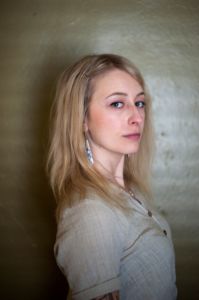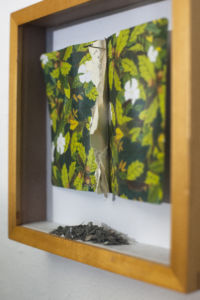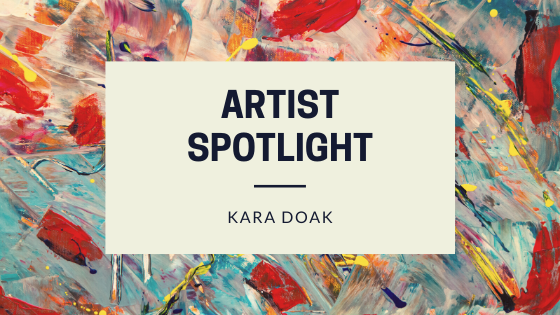Kara Doak’s artwork is strongly influenced by her life—a life that, like one in every five Americans, contains mental health challenges.
“I had my first anxiety/panic attack at 14 or 15 years old. Within the past few years I was also diagnosed with depression.”
Suffice to say that, in some fashion, it is something that she expects to keep struggling with.

Kara Doak, who submitted her burnt journal for Art of Hope.
“Some days are way easier than others. I am lucky to have a support system to be there for me when I need them,” she said. One active part of that support system is her desire and need to create art that reflects her experiences.
Kara began taking her artwork seriously in high school. She earned a photography major and a minor in art history from Herron School of Art and Design, in Indianapolis. Much of her inspiration came from artists who share their internal struggles through their works, such as Yoko Ono and performance-art pioneer Marina Abramović, the self-proclaimed ‘grandmother of performance art’.
“It helps me and it scares me to show it (what’s going on inside of my mind), but I want other people to see it, to feel connected and to not feel alone.”
Since graduating and returning to Fort Wayne, Kara has tended to take jobs that involve a hands-on approach, whether it be restaurant work or, like her current job, working in a framing shop.
“I tried office jobs,” she said, shrugging her shoulders. “I just enjoy working with my hands.” While creating art has yet to become her full-time job, she makes sure to preserve time to create, and in some cases, destroy.
Kara’s Art of Hope submission is a documentation of her burning the pages of a journal that she kept during a year where she was battling mania and depression.

I Burned My Journal. Notebook, ash, t-pins.
In a wordless short film that documents the event, burning wood snaps in her backyard chiminea. Kara, kneeling close to the blaze, turns the pages, pausing briefly to look over each sheet before tearing it from the binding, crumpling it up and tossing into the blaze. Afterwards, she gathered the spent ashes, piling them at the bottom of a shadowbox frame displaying the now-empty journal binding.
“I have a problem sharing my thoughts and the way I feel with people I love, which is kind of ironic because I make all of my work about my anxiety and depression so I can share it with other people, but its hard for me to share it with the people closest to me. So, it was instead of talking to people about it, I just wrote about it.”
“The pages of this journal were filled with my manic anxiety ridden thoughts,” she wrote, describing her work. “Doubts about life, thoughts of not feeling worthy of love. I filled this journal and then burned it page by page to signify my urge to feel better.”
She thought of burning the journal as taking a therapeutic approach, but says it was still a way to hide what she had written when she was experiencing mania. She was concerned about the possibility of her loved ones finding the journal and becoming upset about what she wrote. Overall, Kara says it was a positive experience.
“It was supposed to be therapeutic, but it also was a way to hide, in a sense,” she said. “I felt bad about it at first, but I think it led towards me being able to talk about it more.”
This ability and willingness to share her emotional and mental outlook is an important part of maintaining successful day-to-day relationships with people in her life, especially her husband.
“If I’m having a bad day, instead of waiting for something to trigger me, I just automatically wake up and say ‘I’m not feeling great today. Its nothing you did, I just woke up feeling terrible.’”
You can view I Burned My Journal and many other artworks at the Art of Hope exhibit, opening October 24, 2019. The exhibit is being hosted in Gallery 101 on Manchester University’s Fort Wayne Campus. Feel free to stop in M-F 9 am – 5 pm to view the gallery. The exhibit will close on January 24, 2020.

